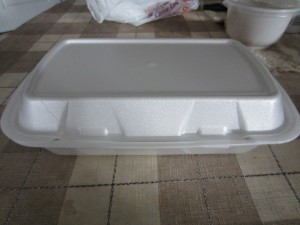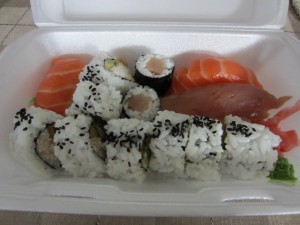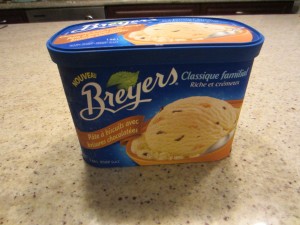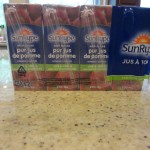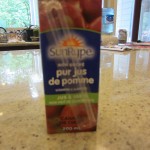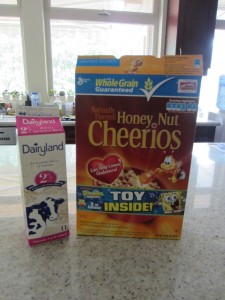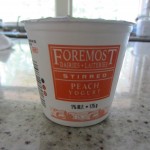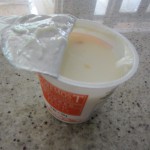So for this assignment I have learnt that just consuming certain foods can consume the oil as well, hence “The oil we eat.” I never realized how much energy goes into the transportation and the distribution of the foods. In a modern society we are accustomed to being able to purchase foods of multicultural foods anywhere we go, but in reality this is harming the environment we live in. The energy that goes into the production of the foods we eat, strip the oil and potential energy stored in the natural world. Also as we deepen our need for oil, oil as a commodity becomes more expensive in more ways than economically. The ratio of oil we put into finding oil to the oil we actually find was once 1:100, but now has decreased to 1:10. The rate we’re heading to is that we’re going to be using more oil to find oil, than the amount of oil we actually find. So the amount of oil we use in the production, packaging, and transporting of our food and ultimately all products will rapidly pass the rate of oil we find.
I got this sushi to go from Station Square in Burnaby and I live a few blocks from the restaurant, so travel time does not seem to be an issue in this case. The sushi I ordered came in a Styrofoam box and the contents in the picture above. The rolls consisted of California roll, tuna roll, and salmon rolls. The overall ingredients seemed energy efficient since most of the ingredients do not require cooking or modification, other than the rice.
I think in the case of this box of to go sushi the main issue is the rice and to go packaging. The rice seems to be a concern because rice is not grown in BC so I assume that the rice is imported from Asia. The cultivation of rice has caused the loss of potential energy, and the clear cutting and plowing of land has encouraged the business aspect in society. With the loss of potential energy in the natural world, it seems to take more energy to produce a crop than the crop is actually providing. Also a major issue with to go food is that there is a lot of unnecessary packaging that goes into the product. For instance with my sushi they gave me multiple chopsticks, soy sauce packages, and an unusually excessive amount of napkins. This all seems like a waste of oil as all these products required energy or oil to be created. Chopsticks and napkins also in turn kill the trees we used to create them. I’m not saying I just tossed the contents in the trash, because I don’t I keep them in a single drawer, but I cant say all customers save the contents. So the main lesson in this case is to perhaps consider eating in, or even consider giving back the extra napkins, chopsticks, and soy sauce when you really have no need for them.
This was partially my lunch but I’ll consider it a snack. This ice cream is Chocolatey Chip Cookie Dough from the company Breyers. Breyers creamery style products are located in Toronto Canada, so transportation and distribution is a major concern in this case. Also the packaging of the ice cream container did not seem to be overly or excessively wrapped. There was just a plastic wrap on the top of the lid so the lid and the container would not separate. I am leaning towards the idea that the overall packaging does not consume the major amount of fossil fuels required in its production.
Main ingredients: modified milk ingredients, water, sugar, glucose, hydrogenate cocunut oil, mono and diglycerides, cellulose gum, guargum, and chocolatey chip cookie dough.
I am definitely concerned about the oil that goes into the production and distribution of the product. The travel the ice cream actually takes to get into stores seems to be an issue. The production of the ice cream and the process that goes into mixing all the ingredients together seems to take a lot of energy. Also the storing and refrigerating of the contents would require a lot of energy to maintain the consistency ice cream needs. The overall energy ice cream requires as well as the energy necessary to keep the ice cream at a suitable state is extremely high.
So I got thirsty and went to grab an apple juice box. I never realized how much plastic covered the apple juice boxes. These apple juice boxed came in a case of five in a huge cardboard box. So my household buys them in bulk. I still can’t figure out if buying in bulk or in single packages is more efficient. Anyways, this apple juice is made by Sun-Ripe products in Kelowna BC, so in terms of distance, transportation is not a major issue with fossil fuels.
Ingredients: apple juice made from fresh apples and vitamin C.
My main concern in this case is the wrapping of the packages, straw wrappers, straws, and the creation of the juice boxes. In this case I think the boxes have been wrapped in secondary packaging since the plastic wraps several cases of juice. Packaging processes take alot of energy and machinery to complete the task and I would consider this as the most biggest fossil fuel absorber in this case. The machinery requires maximum energy supply to support the packaging production. Also another issue with this juice box and the environment is that there seems to be unnecessary waste such as the plastic straw and wrappers. But it is also important to remember that the actual box can be recycled.
Cereal and milk
Milk is 2% from Dairyland. The leading company is Saputo from Montreal Quebec. This company is fairly large and has many locations around Canada. I have also discovered there is a manufacturer right in Burnaby, where I live. So I am assuming the travel distance to transport the milk is not that great and almost insignificant in this case.
Milk ingredients: Partly skimmed milk, vitamin A palpitate, vitamin D.
Cereal that i consumed were Honey Nut Cheerios from General Mills. The company is located in Minneapolis in the United States. Although the company is located in Minneapolis I believe there are closer areas of production. But there isn’t a producer here in BC, so either way this particular brand of cereal requires a large amount of fossil fuel to allow its transportation into our stores and homes.
Major cereal ingredients: Whole grain oats, sugar, modified corn starch, honey, brown sugar syrup, salt, etc.
My main concern with this breakfast meal is how whole grain oats, honey, brown sugar are made and combined to make the cereal. “Whole grain oats” are processed and are no longer whole wheat. The major difference is that “whole grain oats” have been refined and do not contain the full nutrients whole wheat provides. That means within our focus, “whole grain oats” require more energy to alter the grains to produce this particular cereal. Both the honey and brown sugar act as a sweetener for Honey Nut Cheerios. I’m not positive in the overall production of the cereal, but am certain it takes alot of energy to combine all these ingredients into a small cardboard box.
I had peach yogurt from Foremost Dairies. The original company is Loblaws inc. and is located in Montreal, Toronto, and Calgary. This company is also handling many other brand, the major business is President Choice found in Superstore.
Major ingredients of this yogurt: Slim milk, fruitblend, modified corn starch, sugar, modified milk ingredients, carrageenan, pectin, active bacterial cultures.
My major issues with the fossil fuels in this peach yogurt concern the travel distance and the ingredients that are “modified”. Because the company is located in three important cities of Canada, I’m sure there must be a producer closer by than Calgary. But I am not positive. If this yogurt was produced in Calgary fossil fuels would be used in transferring the products to Vancouver, and the distance between the cities is about 675km. Also, IF this yogurt was produced in Calgary the trucks would most likely be built to keep the yogurt products cooler because of their dairy consistency. This refrigerating process would use extreme energy patterns to regulate this process.
My main concern with the ingredients that are “modified” is that they have been altered with excessive energy. “Modified corn starch” is physically and chemically changed natural corn starch. The methods of alteration require energy processes to boil, break down, and ultimately change the natural corn starch. “Modified milk ingredients” are also not in milk’s natural state, they have been changed chemically. Some have said modified milk strips away nutrients, while injecting chemicals into the dairy. So like corn starch, the method to modify milk would require a large sum of energy in turn, fossil fuels to produce that energy.
Hello world!
Welcome to UBC Blogs. This is your first post. Edit or delete it, then start blogging!
